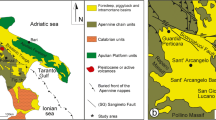
Overview
- Presents a unique place where both volcanic and karst features are intermingled
- Provides the first comprehensive monograph of the highly visited Ankarana plateau
- Includes cave surveys and geographic data that are helpful for visitors, explorers, or managers
Part of the book series: Cave and Karst Systems of the World (CAKASYWO)
Access this book
Tax calculation will be finalised at checkout
Other ways to access
About this book
The book describes the Ankarana plateau and its cave network in Madagascar, depicting the natural environment of the Plateau as well as the natural processes which created the cave network of more than 100km with many galleries, some are very large and draped with different cave formations and underground rivers are inhabited with crocodiles and giant eels.This place is famous for its surface landscape formed with tsingy, natural needles formed by the weathering of limestone. The Ankarana is surrounded by native Madagascan rain forest inhabited with lemurs and it was a natural shelter for the Ankarana people whose kings were buried in caves. The cave system has been partially explored since the sixties and exploration is still in progress. The book includes several maps (geology, topography, hydrology), the survey of the caves and a brief description of the Ankarana Kingdom.
Similar content being viewed by others
Keywords
Table of contents (11 chapters)
-
Front Matter
-
Back Matter
Authors and Affiliations
Bibliographic Information
Book Title: The Ankarana Plateau in Madagascar
Book Subtitle: Tsingy, Caves, Volcanoes and Sapphires
Authors: Eric Gilli
Series Title: Cave and Karst Systems of the World
DOI: https://doi.org/10.1007/978-3-319-99879-4
Publisher: Springer Cham
eBook Packages: Earth and Environmental Science, Earth and Environmental Science (R0)
Copyright Information: Springer Nature Switzerland AG 2019
Hardcover ISBN: 978-3-319-99878-7Published: 23 January 2019
eBook ISBN: 978-3-319-99879-4Published: 02 January 2019
Series ISSN: 2364-4591
Series E-ISSN: 2364-4605
Edition Number: 1
Number of Pages: XXVI, 162
Number of Illustrations: 49 b/w illustrations, 134 illustrations in colour
Topics: Geomorphology, Geology, Hydrogeology, Ethnography


